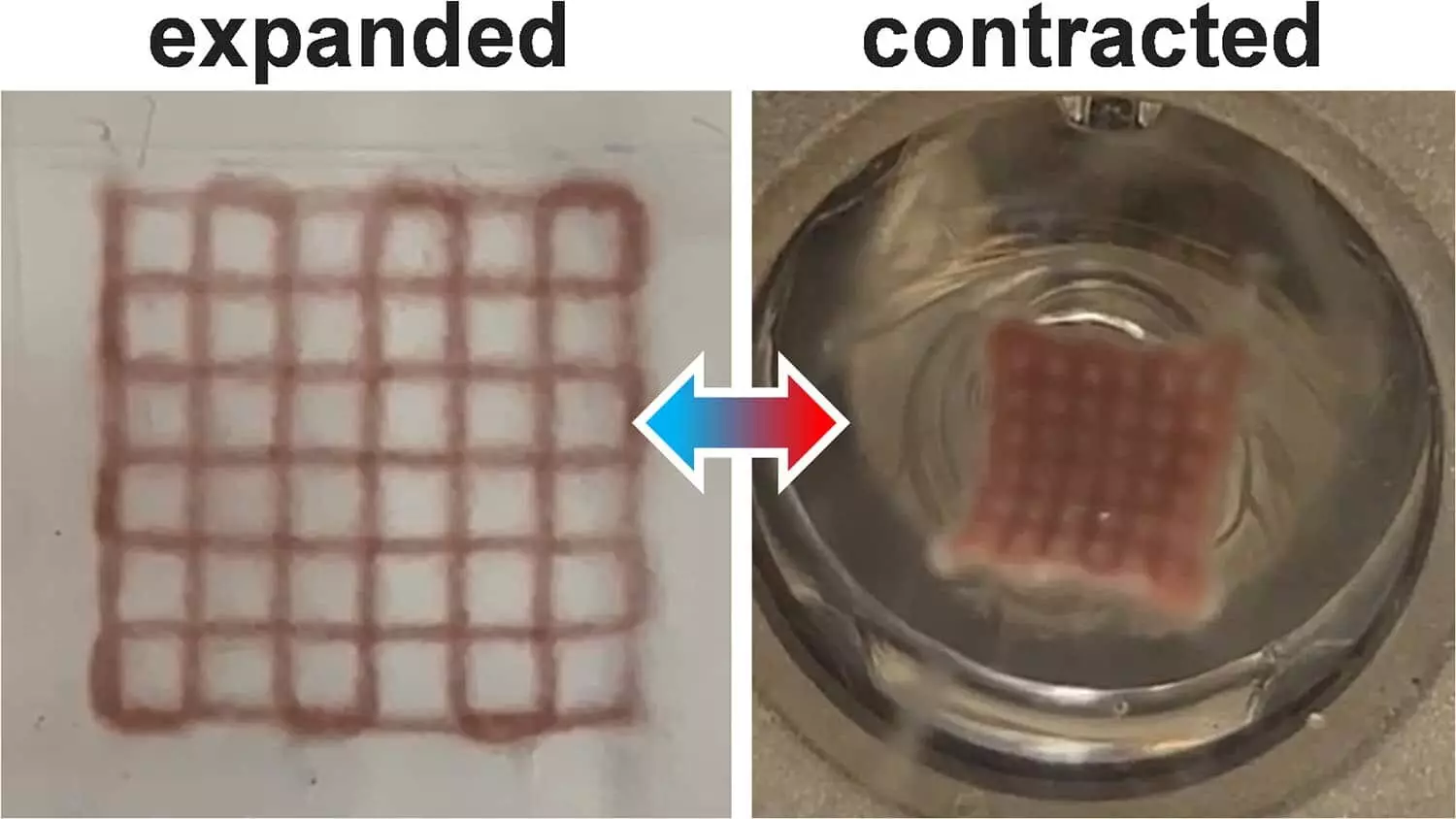In a groundbreaking development in material science, researchers have discovered a method to infuse hydrogels with gold nanorods, resulting in 3D printed structures that exhibit incredible responsiveness to light. This innovative combination offers a glimpse into the potential of responsive materials, transforming the way we think about actuators and smart devices. The underlying principle is simple yet profound: exposing these 3D structures to light causes them to contract, while the removal of light allows them to revert to their original form. This opens doors to a myriad of applications in fields ranging from soft robotics to biomedical devices.
The research team, which includes prominent figures such as Joe Tracy from North Carolina State University and Julian Thiele from Otto von Guericke University, emphasizes the importance of the versatility offered by this technology. By embedding gold nanorods in the polymer matrix of hydrogels, they have created materials capable of undergoing reversible changes, expanding the scope of materials previously restricted to thermal actuators. Their findings suggest a sea change is underway in material design, blurring the lines between biology and engineering.
The 3D Printing Breakthrough
The method developed by the research team employs an innovative approach to 3D printing that circumvents some of the inherent limitations of traditional hydrogel printing. By utilizing a solution containing gold nanorods combined with the essential components for creating hydrogels, they managed to mold complex shapes without the typical challenges related to viscosity that hindered past efforts.
This vital advancement involves first printing the solution into a mixture of gelatin microparticles suspended in water, which serves as a supportive medium. The translucency of the gelatin allows light to penetrate and trigger the polymerization process that solidifies the hydrogel. The researchers cleverly engineered this system so that, once illuminated, the mixture forms a stable polymer network, ultimately yielding intricate designs that are characteristic of 3D-printed materials. Once the desired structure is solidified and appropriately shaped, the gelatin can be melted away, leaving behind a hydrogel body perfectly tailored for responsiveness.
Light as a Catalyst for Functionality
The ability for these hydrogel structures to engage with light fundamentally changes our understanding of actuation in materials. In conventional setups, actuation often relied on thermal energy or mechanical methods, which are inherently limited in their application. With these new hydrogels, the removal of the light source allows for fluid dynamics to take place: as the embedded gold nanorods convert light energy to heat, they induce a contraction of the hydrogel, pushing water out and thereby shrinking the structure.
This duality of acting under light and returning to its initial contour when the light is off means that these actuators can be utilized in innovative ways, enabling remote control of their operation. The implications are profound for industries that rely on delicate maneuvers, such as surgical robots that demand precision without direct contact or interference.
Redefining Actuator Applications
The significance of these developments extends far beyond academic interest. The potential applications of such technology include advanced biomedical devices capable of intricate, responsive behaviors—traits that are pivotal for both therapeutic devices and diagnostic tools. Imagine implants that can release drugs in a controlled manner triggered by light exposure, or scaffolding that mimics the movement of biological tissues, enhancing the integration of implants.
Additionally, soft robotics stands to gain immensely from this advance. The intricacy of 3D-printed designs coupled with the tunable properties of these hydrogels may facilitate the creation of robots that can manipulate objects delicately, navigate through tight spaces, or even mimic natural movements in a lifelike manner.
The Road Ahead for Smart Materials
While promising, the journey of integrating light-responsive hydrogels into practical applications isn’t without challenges. As researchers continue to fine-tune the methodology and explore new combinations of nanoparticles, the efficiency, stability, and responsiveness of the materials must be optimized for real-world utility. As the technology evolves, it is crucial to anticipate the ethical considerations and safety regulations that will accompany such innovations, particularly in medical applications.
The pioneering work unraveling the potential of gold nanorods in hydrogels signals a shift towards a future laden with intelligent materials. As we look ahead, there is no doubt that these advancements will blaze trails across multiple domains, merging the realms of engineering, biology, and technology in ways we are only beginning to comprehend.

